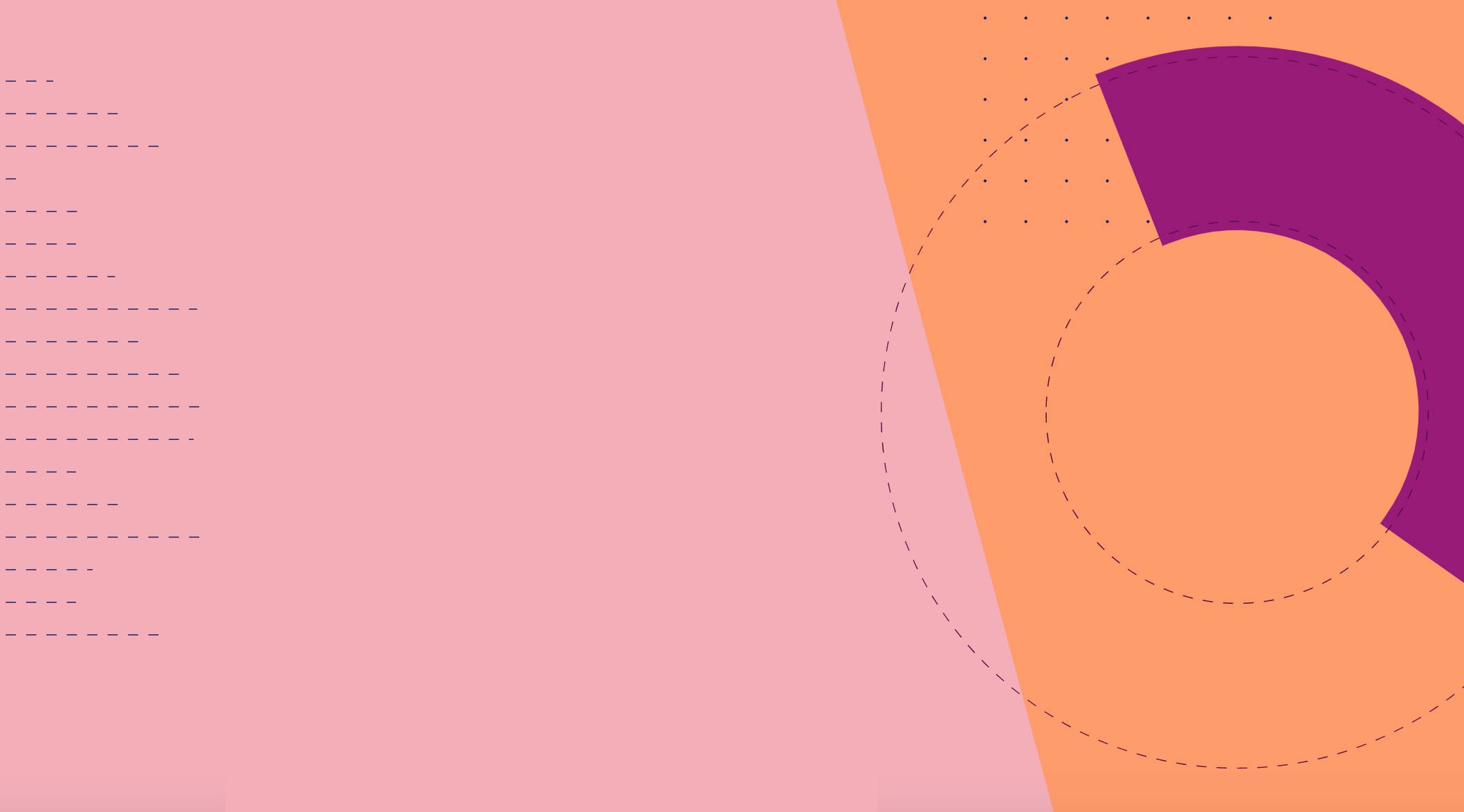Awesome news: 490 people saw a tweet I sent out this week! Awesomer still, 16 people either clicked the link, left a reply, or favorited the tweet.
And as for the other 474 people?
I couldn’t tell you.
Did they enjoy the tweet? Did they notice it? Did it delight them? Did it—eep!—offend them? And perhaps most importantly, what can I learn from these quiet observers so that, when I send my next tweet, those 474 followers find a reason to click, reply, retweet, or favorite?
Meet social media’s invisible audience—and the inevitable questions that this crowd elicits.
The invisible audience among my Twitter crowd and the invisible audiences on Buffer’s social media accounts (and even on this blog) offer a unique opportunity for us to consider how we craft our updates and our content. I’ll be happy to share how I think about this silent majority as well as some interesting research and rules about this topic.
Is this a demographic you consider in your social media marketing? Share in the comments, and read ahead for some insights, stats, and tips.
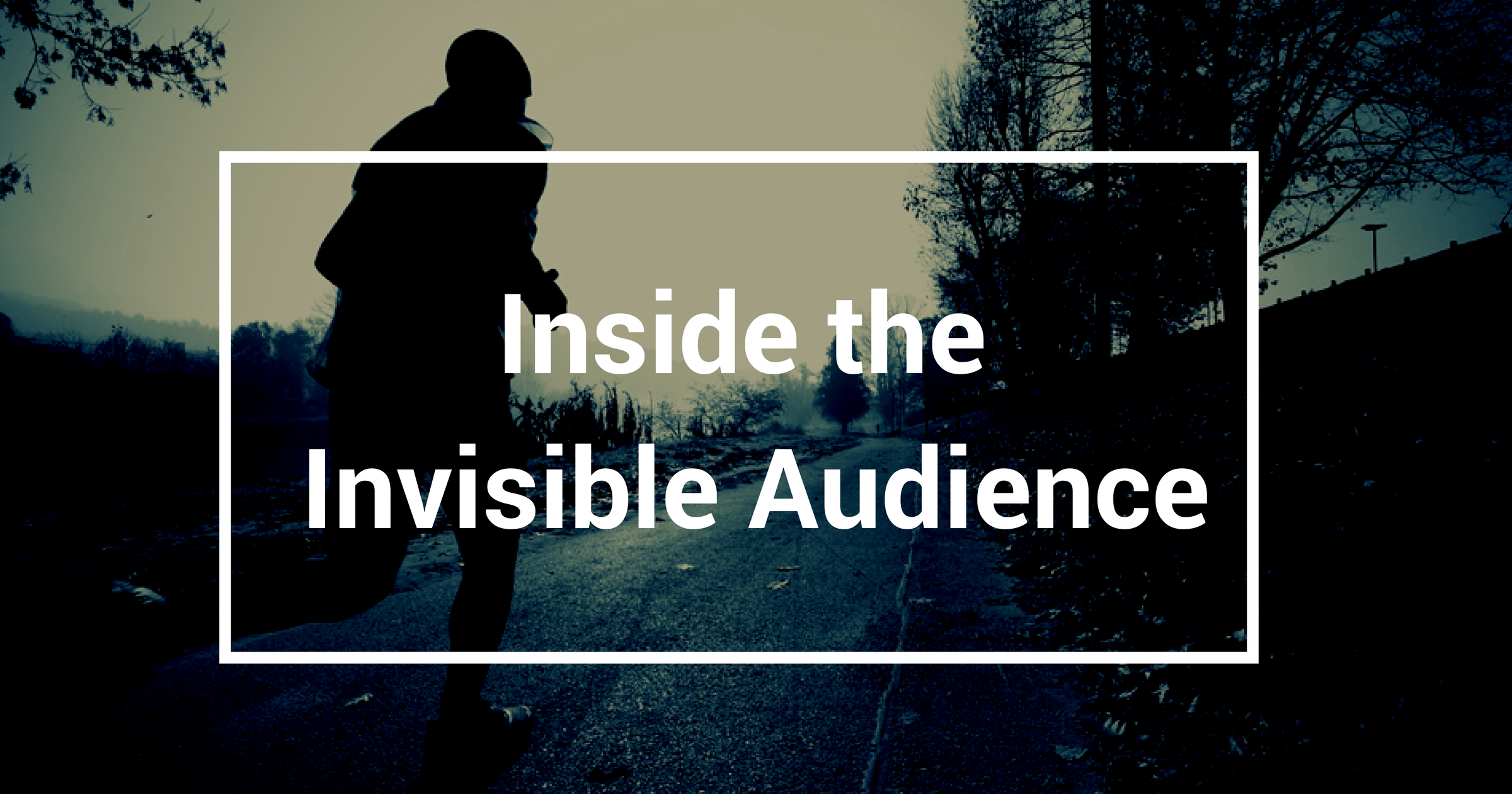
Your audience is 4x larger than you think
Posting to a social network site is like speaking to an audience from behind a curtain. The audience remains invisible to the user.
While the invitation list is known, the final attendance is not.
– Dr. Michael Bernstein, Stanford
How many people do you think see your updates on Facebook?
Chances are that your actual audience is much larger than you think.
A joint research project by Stanford and Facebook studied the perceived vs. actual audience sizes of 220,000 Facebook users. Each user was asked what they believed to be the size of their audience, then the research team compared this perceived size to an actual size, using server logs to gauge the true scope of a post’s audience.
The result: Your actual audience size is four times larger per post than what you think.
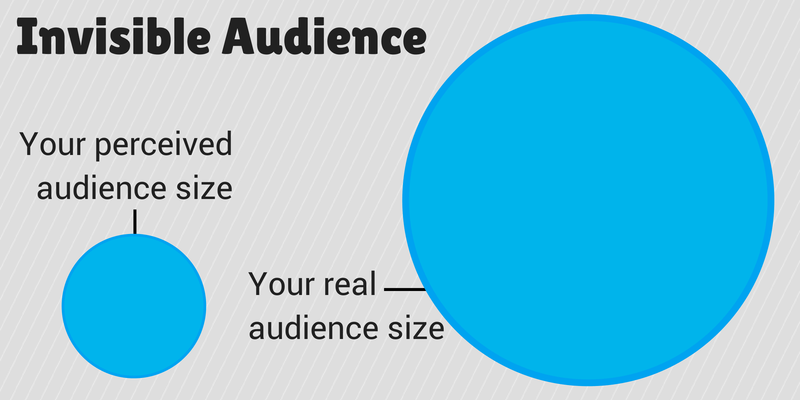
Also of note is how these users came to gauge the size of their perceived audience. Researchers classified survey responses into eight different categories, and none of the eight involved a specific audience-size metric like impressions or reach. The top way we gauge our audience size: Guessing.

Takeaway: Our posts reach a much greater number of people than we think. And we haven’t quite figured out how to measure our audience size.
Participation inequality: The 90-9-1 Rule
Back in 2006, bloggers Ben McConnell and Jackie Huba coined a term to describe the ratio of activity in online forums: The 1% Rule, also known as the 90-9-1 Rule.
- 1 percent of users are creators
- 9 percent of users are commenters
- 90 percent of users are observers
This image from Christopher Allen sums it up nicely:
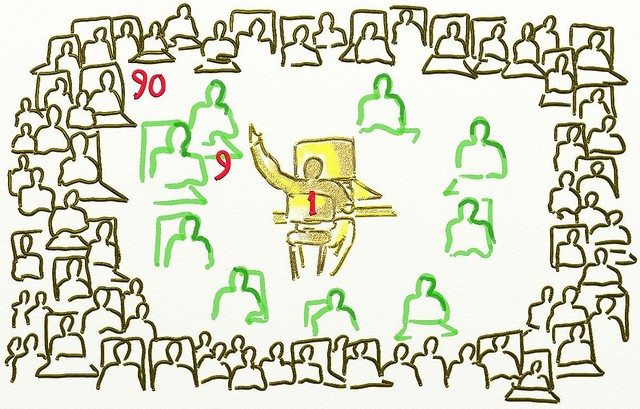
The rule has since been adopted across a wide range of Internet interactions, including social media. If you picture yourself in a group of 100 people, you are the creator, nine of the 100 people engage with your content, and the other 90 are just there to observe, read, and lurk.
Here’s the thing with this rule, though: It’s not going to be 100 percent accurate for your audience.
Paul Schneider tested the theory on his audience, finding a 70-20-10 ratio.
The Community Roundtable noticed a split of 55-30-15 among their community.
You’ll have your own ratio.
For instance, in the example that I used to start this article, my Twitter ratio of participation inequality was closer to 95-4-1. Across our Buffer social profiles, I’ve noticed a similar split—4 to 5 percent engagement rate is fairly standard.
So instead of taking the 90-9-1 rule as gospel truth, it’s best to think of it as a reminder that lurkers are in the majority, engagement is the minority. And this tends to be the norm for online communication.
How large is your silent majority?
To come up with your own ratio of participation inequality—and to see how many people truly view each of your updates and posts—you simply need to look at the numbers. Here’s how I found our ratio for Buffer’s social accounts and the Buffer blog.
How to find your invisible audience on Twitter
To check out your stats on Twitter, you can navigate to the new analytics dashboard for publishers, developers, and advertisers at analytics.twitter.com. It’s quite beautiful, and super informative. (If you’ve yet to get analytics access, you can try a tool like TweetReach.) From the main dashboard you can see your tweet impressions: the number of times users saw your tweet. Next to that is tweet engagements: all clicks anywhere on the tweet (including avatar, username, hashtags, links, and tweet expansion), retweets, replies, favorites, and follows.
Then Twitter will even do the math for you with engagement rate: engagements divided by impressions. Your invisible audience is the difference between impressions and engagements, or the inverse of engagement rate.
Here is a sample post from our Buffer analytics:
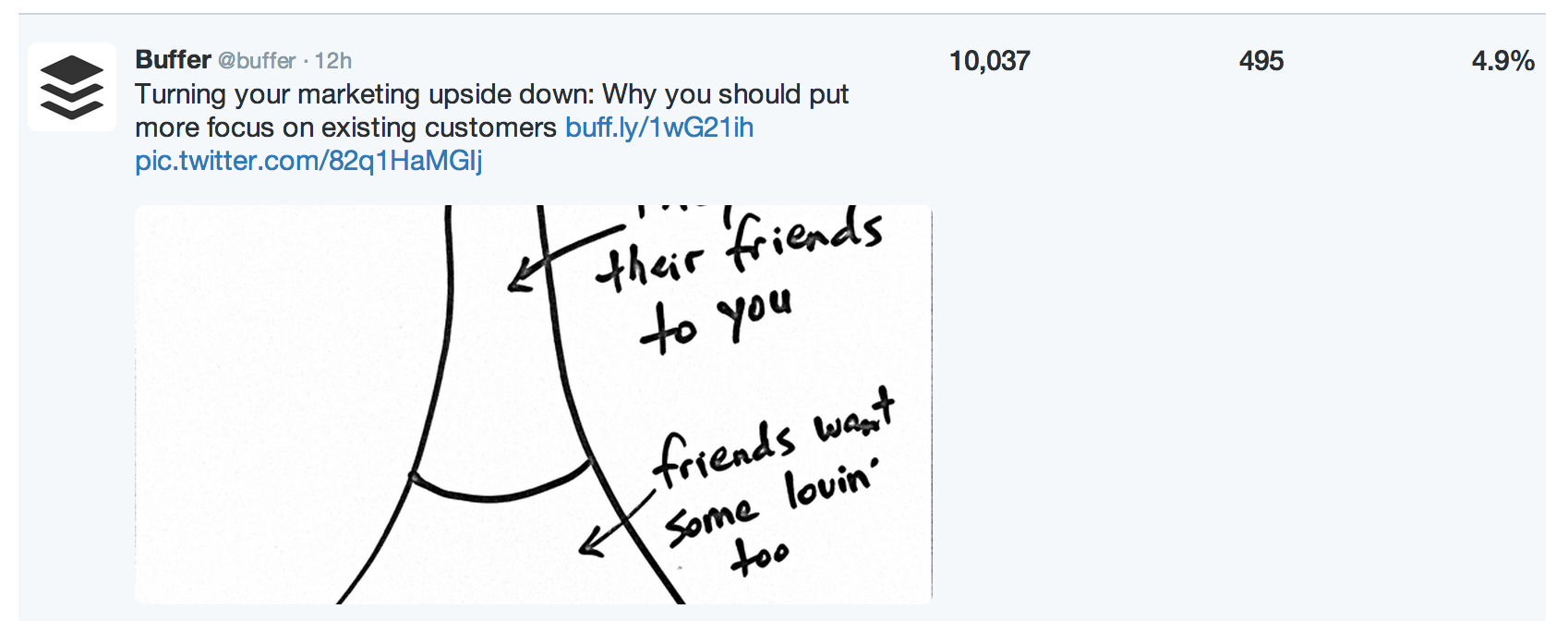
How to find your invisible audience on Facebook
You can grab your ratio from Facebook in a similar way to Twitter. Go to your page insights (click on Insights at the top of any page you manage), and total up the Reach from your recent posts and the Engagement from your recent posts. Then divide engagement by reach to arrive at your engagement rate.
You can also peek at an individual post to see its reach and then total up the likes and comments to gauge engagement.
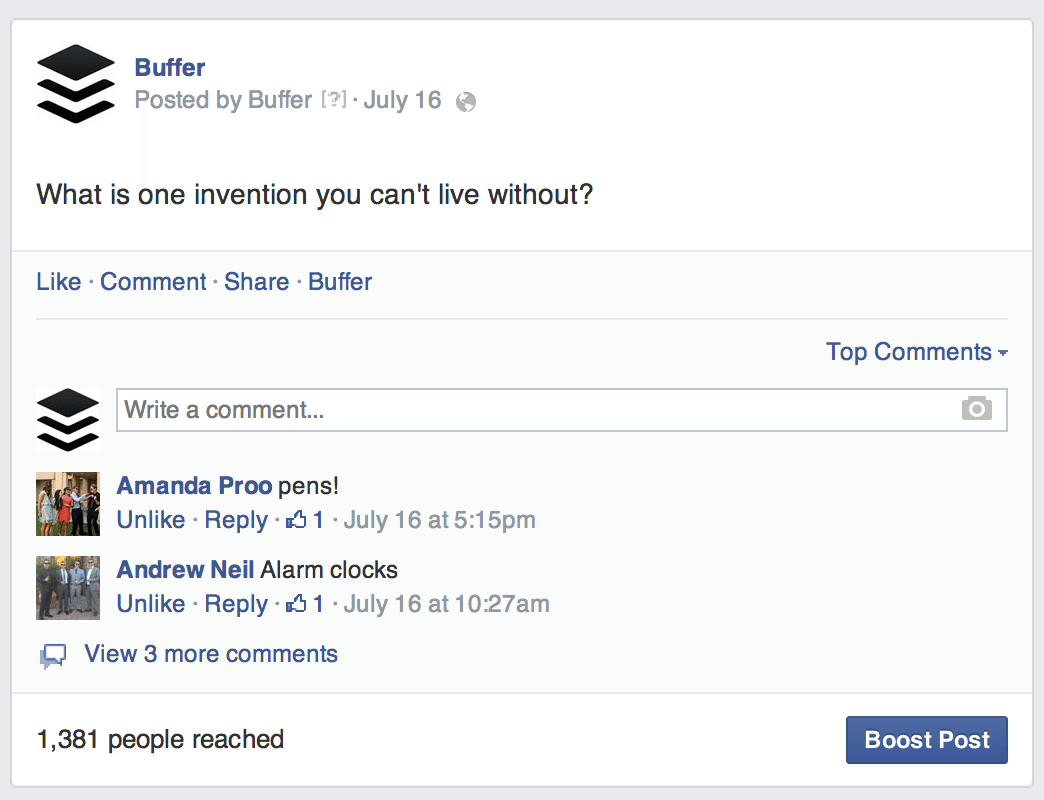
How to find your invisible audience on your blog
Hop into your analytics dashboard and look for the unique visits to each post (in Google Analytics, you’ll find this under Behavior > Site Content). Then find the total comments on each post, divide comments by visitors, and you’ll get the comment rate.
One of our most popular recent posts, Courtney’s list of free image sources, has brought a whopping 147,000 visitors to the blog and a whopping 116 comments. Interesting, the comment rate on this post—even with over 100 comments—is 0.08 percent. If we were to split up the 90-9-1 rule of participation according to this post’s comment numbers, the ratio might look like this: one creator, the big toe of a commenter, and the rest lurkers (and clickers and sharers)!
In our experience, blogs have an even greater invisible audience than on social.
5 ways to respond to your invisible audience
OK, back to the question that started out this article: What does your invisible audience think of your content? There’s no way to really know, yet that shouldn’t stop you from supporting this large group and thinking outside the box on ways to reach them. Here are five different ways I’ve found to do just that.
1. Go where your invisible audience is
Have you heard of the phrase “dark social”?
It’s a term that describes the sharing that happens outside the traditional bounds of social media. For instance, people may share via email or via IM, and these interactions are seldom included in traditional share numbers. A 2012 study from The Atlantic and Charbeat found that 69 percent of social referrals were from dark social—i.e., not Facebook, Twitter, Reddit, etc.
If your invisible audience wishes to stay invisible on social media, could there be another place to find them?
We’ve recently began looking deeper at email. Our stats show that the invisible audience size on email is smaller than it is on social. We can reach 27 to 40 percent of our email list of 35,000 each time we press send.
Another interesting take on this is the most-used apps by this year’s high school graduates. Texting is the far-and-away winner, with other interesting apps like Pandora and Netflix among the top ten.

2. Keep a consistent schedule
One of the conclusions from the Stanford-Facebook study mentioned above was that a misperception about audience size could have a direct effect on one’s social media marketing.
The mismatch between the size of perceived audience and the actual audience may be impacting users’ behavior, ranging from the type of content they post, how often they post, and their motivations to share content.
The reasoning here is that a smaller perceived audience might cause sharers to decrease their volume of updates. If few people are listening, the temptation might be to post less often.
Heidi Cohen advises to withstand the temptation. Keep a consistent schedule (a scheduling app like Buffer can help with this). Your invisible audience is likely much larger than you think, and they’re primed to keep hearing from you.
3. Invite participation
Dan Zarrella’s popular social media research often references a consistent trend: If you ask for participation, you’re more likely to get it.
This might look a number of different ways. For instance, Zarrella found that asking for a retweet actually increases one’s odds of getting retweeted—by up to 39 percent.

4. Stick to your guns (or your bio)
How might you know what kind of content your invisible audience wants?
One of my theories is that they’re likely to want what you’ve promised them—either via your social media bio, your blog mission statement, or your company/position/tagline.
For instance, I’ve mentioned that you can expect tweets from me about writing as well as a handful of fun, curated links. I’ve likely gained a silent majority of followers who understand (and appreciate) that this is the type of content I’ll be sharing.

5. Rely on accurate metrics
It’s tempting to look at clicks, shares, comments, and favorites and assume that those are the people reading and viewing your content. Remember, it’s likely that your audience is much, much larger.
I’ve come to rely on a handful of different metrics to gauge the success of a piece of content. Above, I outlined how to view reach or impressions via Facebook or Twitter. Here are a few other social media and blog stats that I tend to focus on.
- Relative engagement rate – average conversations happening per post, per follower
- Follower/fan growth, week-over-week and month-over-month
- Time on site
- Social shares
Over to you: How might you respond to your invisible audience?
It’s clear that the silent majority on social media makes up a huge amount of the people seeing our tweets, posts, and updates.
How might this invisible audience impact the way you share?
I’ve found it’s important to stay on topic, post consistently, and track these silent impressions as accurately as possible. You may even find value in seeking out new places to find these quiet followers: email, direct message, forums, or even SMS.
My one big thing: Keep this invisible audience in mind when you’re posting. Be their voice by remembering that they’re out there, reading, observing, lurking, and following—and doing so in much greater droves than we might think.
Image sources: kaneda99, Christopher Allen, Dan Zarrella, The Atlantic
Try Buffer for free
140,000+ small businesses like yours use Buffer to build their brand on social media every month
Get started nowRelated Articles

In this article, Nupur Mittal shares insights into four research methods that help her find content ideas and identify unique takeaways.
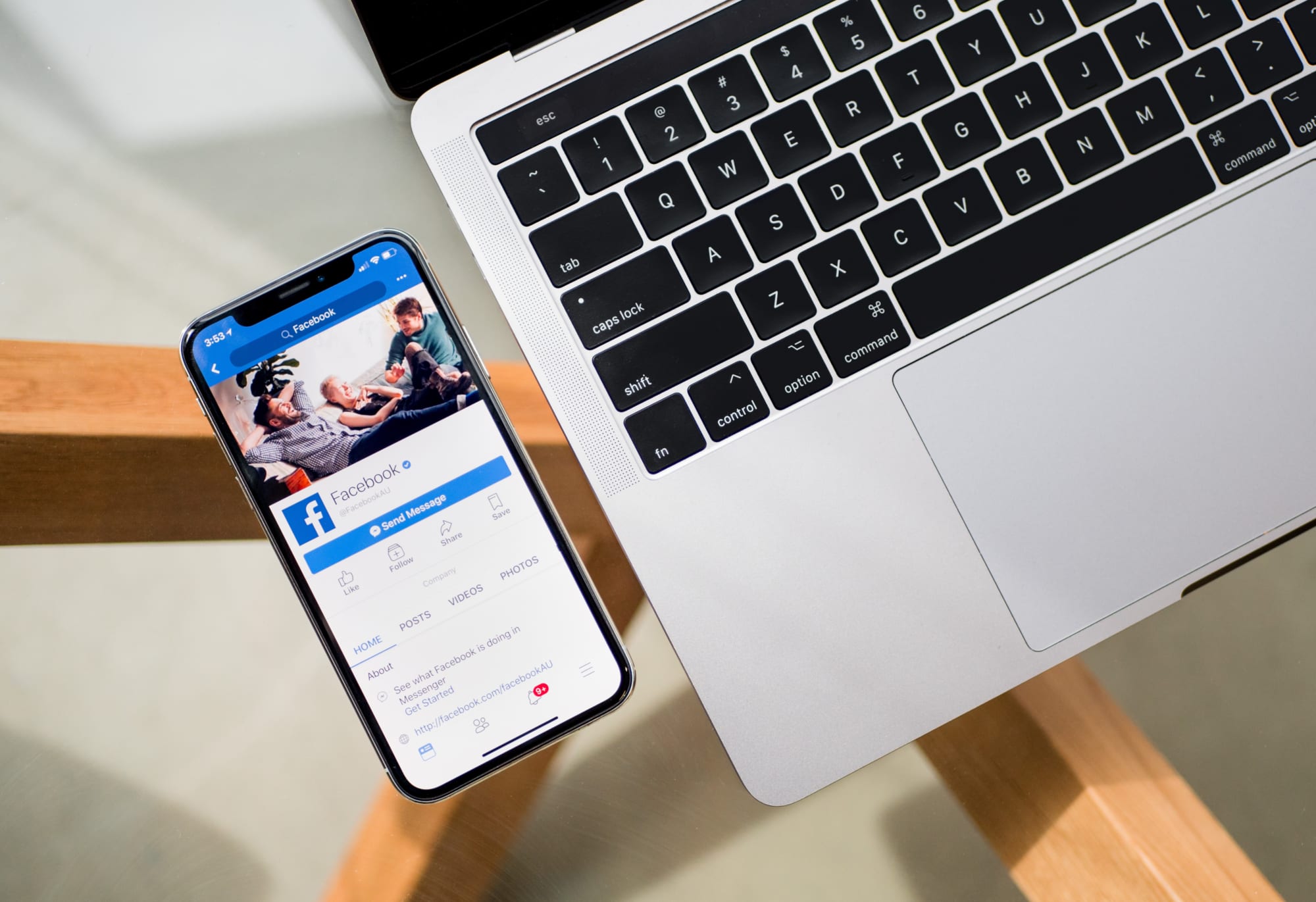
Facebook marketing in 2019 isn’t dead. On the contrary, it’s far from it. Now removed from the dim outlook that businesses faced at the beginning of 2018, Facebook has and will remain an essential tool for brands’ marketing strategies moving forward. In our big State of Social Media 2019 Report, we found that 93.7 percent of businesses use and are currently active on Facebook — the most among any other social media network. And although we continue to see a dramatic rise in the usage

